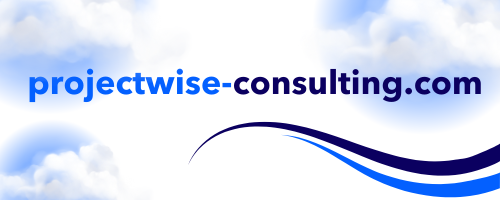Good communication between danger and resilience strengthens danger tradition and builds a extra resilient enterprise. Understanding danger is important for resilience. And a resilient group is healthier positioned to face up to dangers.
But these groups typically function independently, every with its personal objectives, its personal language, and its personal metrics. That disconnect can undermine each capabilities – and have actual price implications for the group.
The Hidden Value of Disconnection
 Over time, many organizations have expanded their view of danger from its insurance coverage roots to enterprise-level threats, inflicting the orbits of danger administration and resilience to eclipse.
Over time, many organizations have expanded their view of danger from its insurance coverage roots to enterprise-level threats, inflicting the orbits of danger administration and resilience to eclipse.
Whereas these capabilities come from totally different views, the purpose of each danger and resilience is basically to take away obstacles that would impede efficiency. The issue is once they attain conflicting conclusions about these obstacles as a result of neither one might see the complete image.
Right here’s why the disconnection is expensive:
Conflicting priorities. Danger groups prioritize dangers primarily based on probability and influence, typically relying closely on previous expertise. Resilience groups prioritize efforts primarily based on the plausibility of a state of affairs and whether or not it’s credible even with out historic proof. It’s an issue when these priorities are at odds.
Language barrier. Are danger and resilience groups utilizing the identical time period to measure various things – or totally different phrases to measure the identical factor? One thing so simple as one staff utilizing “individuals” and the opposite utilizing “staff” may cause time-wasting confusion. Phrases to be careful for:
- Incident/disaster
- Menace/danger
- Provider/vendor
- Location/space
- Organizational danger/organizational resilience/operational resilience
Agreeing upfront on taxonomy and standards can velocity up communication and decrease misunderstandings.
Measurement misalignment. Resilience groups have a look at influence tolerance – the quantity of disruption the group can deal with earlier than clients, staff, the enterprise, and markets are intolerably harmed. Danger groups measure dangers towards danger urge for food – the quantity of volatility acceptable to attain objectives. When these ideas are thought of in isolation, it’s tough to evaluate the true influence of a danger or which controls are most significant. Two tales additionally make it tough for the board to grasp what to give attention to.
Redundant work. Each groups asking others for a similar – or nearly the identical – enter on distributors, dangers, impacts, and many others. wastes time, squanders sources, and slows response to rising threats. And the requests will be additional annoying if extra work should be accomplished to regulate the info to suit the peculiarities of every staff.
Learn how to Begin the Dialog
 Higher communication between danger and resilience makes each groups extra environment friendly by eliminating duplicate work and eradicating language limitations. However that’s simply the beginning. Nearer collaboration will assist the danger staff suppose extra virtually about potential outcomes. And it’ll assist the resilience staff carry a strategic focus to state of affairs testing.
Higher communication between danger and resilience makes each groups extra environment friendly by eliminating duplicate work and eradicating language limitations. However that’s simply the beginning. Nearer collaboration will assist the danger staff suppose extra virtually about potential outcomes. And it’ll assist the resilience staff carry a strategic focus to state of affairs testing.
Listed below are six steps to get the ball rolling:
- Create a cross-functional staff. Put collectively a staff with illustration from each capabilities. This group can work collectively to determine dangers, prioritize actions, and develop options. They will set up frequent workflows that bake in cross-collaboration from the beginning. Chances are you’ll even discover that together with your mixed efforts, information gathered for one requirement will be leveraged to adjust to one other, saving everybody effort and time.
- Get management buy-in. An government sponsor who can champion the cross-functional group’s work is a bonus. This individual can have the authority to garner broad management help and safe obligatory sources.
- Set up a daily cadence for speaking. Don’t await hassle to occur. Get the cross-functional staff collectively regularly as a discussion board to boost points, focus on options, and construct belief.
- Determine on a standard language and metrics. Come collectively to institute a standard taxonomy and measurement standards for all stakeholders – together with each the danger and resilience groups and inner companions. Shared aims and KPIs can encourage groups to collaborate on options. A standard language additionally will assist remove discrepancies and misunderstandings – which is very necessary when going through the pressures of disruption.
- Embody each capabilities in train testing. Don’t restrict state of affairs testing to simply the resilience staff. Involving the cross-functional staff helps everybody suppose past their roles and share totally different views for making enhancements. This additionally will get everybody comfy with the plan – and with one another – which may increase efficiency and communication in an precise disaster. Apply makes excellent.
- Use built-in software program. Right now’s software program offers all stakeholders entry to the identical high-quality information to allow them to trade data and collaborate on actions. It reinforces the agreed-on vocabulary, standardizes processes, and establishes one supply of fact for all, from frontline administration to the board.
Eradicating the partitions between danger and resilience will unlock data, remove duplicate work, and align strategic priorities. A collaborative view offers you the ability to see round corners to reduce danger, disruptions, and prices. And a enterprise that retains going below any situations evokes confidence with staff, clients, the board, auditors, and everybody else who issues.
For extra on constructing a extra resilient group, obtain our e book, Getting Began with Enterprise Resilience, and take a look at Riskonnect’s GRC and Enterprise Continuity & Resilience options.

